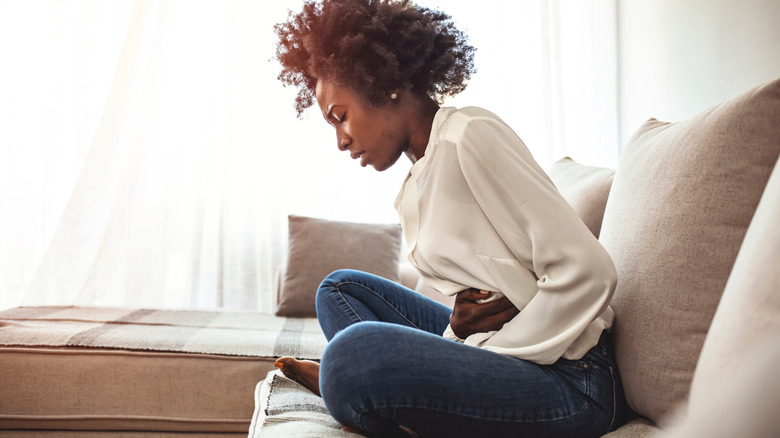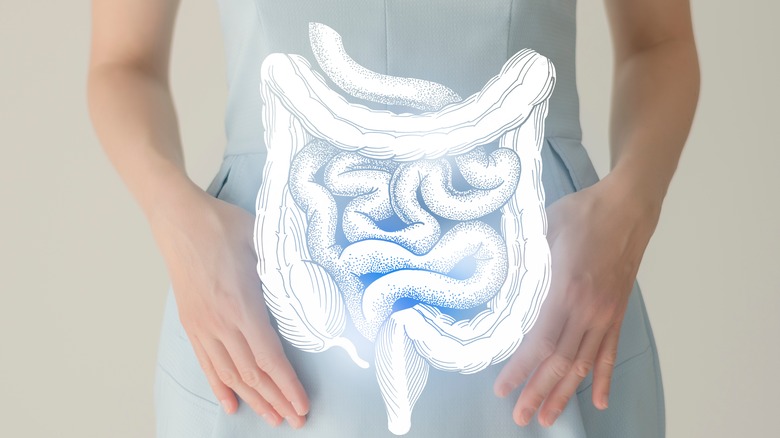How To Identify The Different Types Of Ulcerative Colitis
If you're experiencing gastrointestinal issues, it can be hard to know what's going on. From a stomach bug to Crohn's disease and everything in between, it can be overwhelming. Even within diagnoses, there may be different types. This is the case with ulcerative colitis, which has four different types.
Ulcerative colitis is a form of irritable bowel disease that affects the lining of the gastrointestinal tract, specifically the large intestine, rectum, or both (via Healthline). The lining becomes inflamed, and as the cells of the lining die over time, little sores (or ulcers) form that can cause bleeding and create mucus and pus. This inflammation can cause frequent and urgent emptying of the bowel. The severity of symptoms, which can include abdominal pain, diarrhea, bloody stools, weight loss, and malnutrition, vary from person to person and can change over time. While researchers aren't clear on what causes ulcerative colitis, it can be due to an overactive immune system, genetics, other immune disorders, and environmental factors. An estimated 600,000-900,000 Americans suffer from ulcerative colitis, and it's most commonly diagnosed between the ages of 15 and 30, according to the National Institute of Diabetes and Digestive and Kidney Diseases.
What the four different types mean
While ulcerative colitis seems straightforward, there are actually four different types that can affect your colon in different ways (via Mayo Clinic). It's usually classified according to the location of the inflammation. Ulcerative proctitis is the first type, which is when inflammation is mainly located in the area closest to the rectum, with rectal bleeding being the only symptom. When ulcerative colitis affects the rectum as well as the lower end of the colon, it's called proctosigmoiditis. Also called the sigmoid colon, the disease that affects this part of the body can cause symptoms that include bloody diarrhea, abdominal cramps, and being unable to move the bowels despite feeling the urge to do so.
Sometimes, ulcerative colitis only affects the left side of the intestines, called left-sided colitis (via Mayo Clinic). Inflammation affects the rectum, sigmoid colon, and descending colon, causing abdominal pain and cramping on the left side, bloody stools, and urgency to use the bathroom. Lastly, there's pancolitis, which affects the entire colon and can cause severe diarrhea, abdominal pain, fatigue, and significant weight loss.
Ulcerative colitis can be debilitating and has no cure, but can be treated with medication, allowing for periods of remission (via Mayo Clinic). Drug options include anti-inflammatories, immune system suppressors, biologics, and others like pain relievers, antispasmodics, and anti-diarrheal medications.


